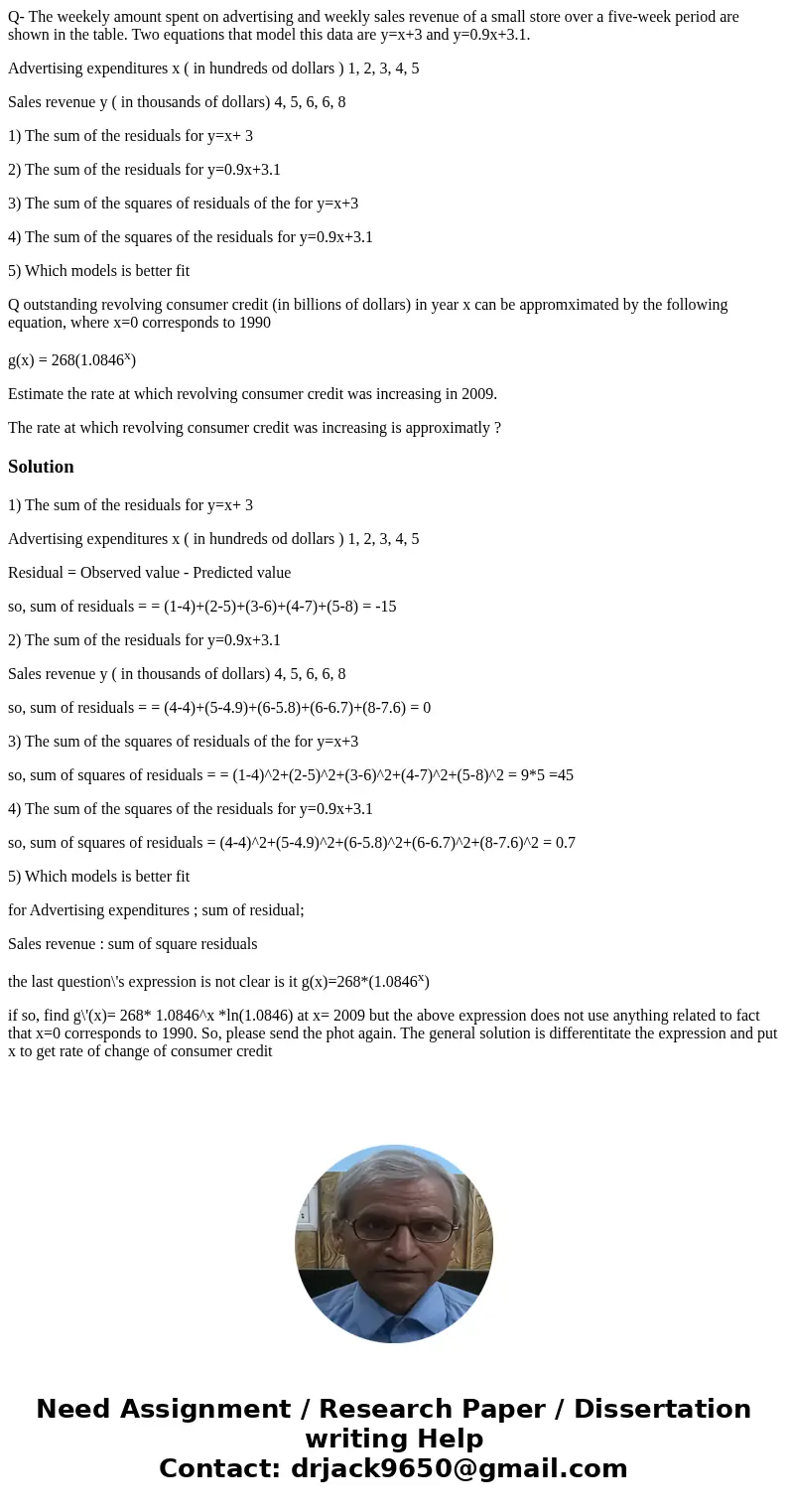Q The weekely amount spent on advertising and weekly sales r
Q- The weekely amount spent on advertising and weekly sales revenue of a small store over a five-week period are shown in the table. Two equations that model this data are y=x+3 and y=0.9x+3.1.
Advertising expenditures x ( in hundreds od dollars ) 1, 2, 3, 4, 5
Sales revenue y ( in thousands of dollars) 4, 5, 6, 6, 8
1) The sum of the residuals for y=x+ 3
2) The sum of the residuals for y=0.9x+3.1
3) The sum of the squares of residuals of the for y=x+3
4) The sum of the squares of the residuals for y=0.9x+3.1
5) Which models is better fit
Q outstanding revolving consumer credit (in billions of dollars) in year x can be appromximated by the following equation, where x=0 corresponds to 1990
g(x) = 268(1.0846x)
Estimate the rate at which revolving consumer credit was increasing in 2009.
The rate at which revolving consumer credit was increasing is approximatly ?
Solution
1) The sum of the residuals for y=x+ 3
Advertising expenditures x ( in hundreds od dollars ) 1, 2, 3, 4, 5
Residual = Observed value - Predicted value
so, sum of residuals = = (1-4)+(2-5)+(3-6)+(4-7)+(5-8) = -15
2) The sum of the residuals for y=0.9x+3.1
Sales revenue y ( in thousands of dollars) 4, 5, 6, 6, 8
so, sum of residuals = = (4-4)+(5-4.9)+(6-5.8)+(6-6.7)+(8-7.6) = 0
3) The sum of the squares of residuals of the for y=x+3
so, sum of squares of residuals = = (1-4)^2+(2-5)^2+(3-6)^2+(4-7)^2+(5-8)^2 = 9*5 =45
4) The sum of the squares of the residuals for y=0.9x+3.1
so, sum of squares of residuals = (4-4)^2+(5-4.9)^2+(6-5.8)^2+(6-6.7)^2+(8-7.6)^2 = 0.7
5) Which models is better fit
for Advertising expenditures ; sum of residual;
Sales revenue : sum of square residuals
the last question\'s expression is not clear is it g(x)=268*(1.0846x)
if so, find g\'(x)= 268* 1.0846^x *ln(1.0846) at x= 2009 but the above expression does not use anything related to fact that x=0 corresponds to 1990. So, please send the phot again. The general solution is differentitate the expression and put x to get rate of change of consumer credit

 Homework Sourse
Homework Sourse